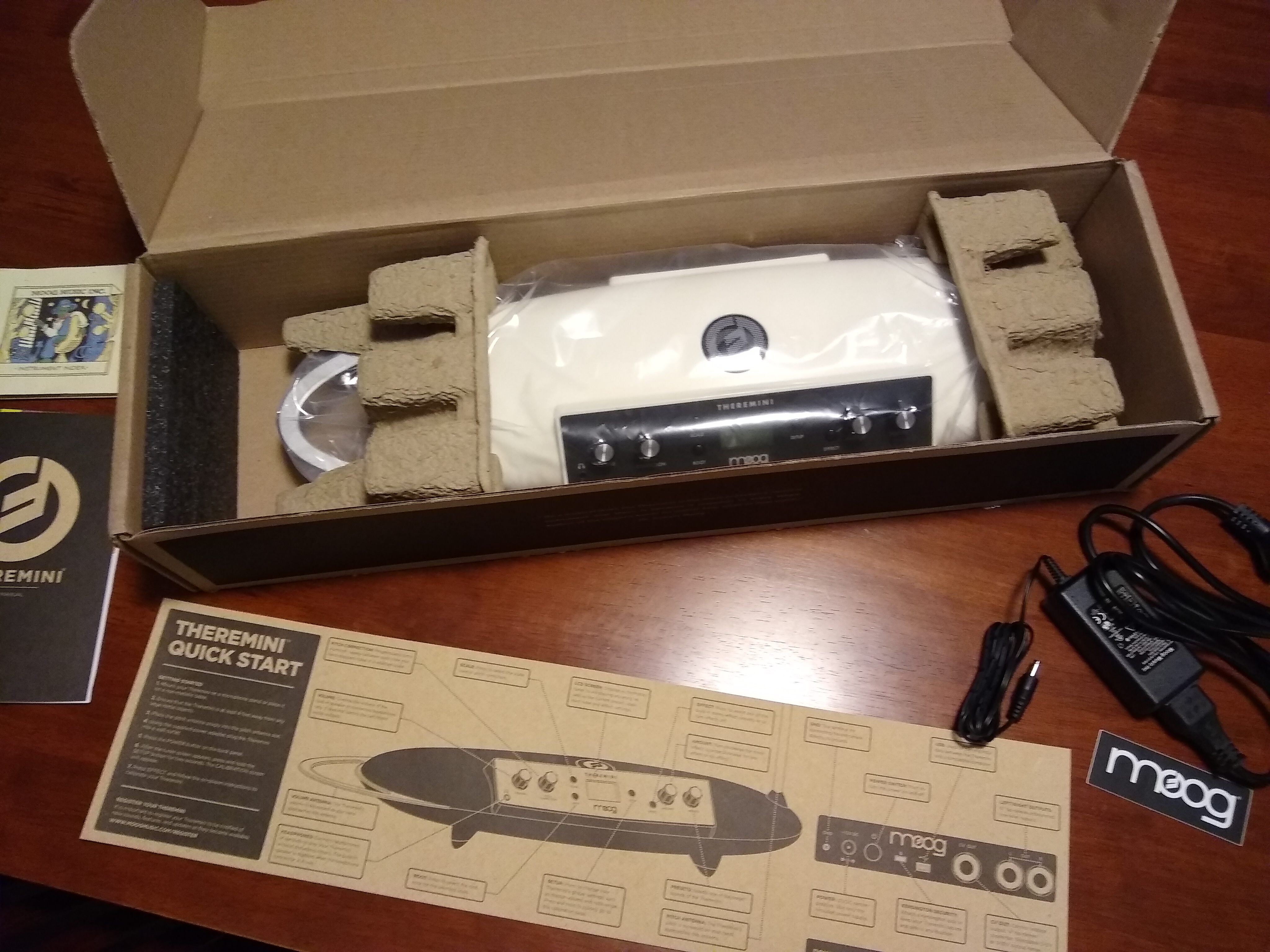As previously mentioned, I splurged and bought a Moog Etherwave Theremini. I ordered it through Manny’s Music in The Valley, they had it delivered via the longest route possible in Brisbane (even though it was literally just up Water St). It was in my wish list for nearly a half a year as it was out of stock, then on back-order for over a month – Covid-19 seems to have played merry hell with supply lines apparently.

It arrived well-packed, the carry bag a week later. I diligently read the literature (well, the quickstart guide at least), plugged it in, calibrated it (more later) and started to make out-of-tune space noises almost immediately.
It earned the “turn that shit off” seal of approval from She Who Must Be Obeyed almost instantly (who then gifted me a set of headphones, a few days later bought some Audio Technica Monitor heaphones).
Basics of noise-making on a theremini are pretty sumple – there are 2 antennae – the upright one is pitch (how high or low the note is) and the horizontal loop is the volume (close is quiet, far away is loud).
The sound it starts with is “classic theremin”, I added a “long delay” effect (a resonant echo) to it and generally waved near the pitch antennae to make these noises:
Delay is fairly non-traditional and classic thereminists would be horrified, but at the time I thought it sounded cool. It does change the latency/responsiveness of the instrument, making pitch control more challenging and increasing note inaccuracy.
Calibration is important. You have to tell the device about the environment it is playing in – given the antennae pick up capacitance, surrounding stuff can effect the sensitivity and precision of human movement detection. You start by telling it what it is like with no one near (1.5m), then calibrate near and far hand positions of pitch and then volume loops. Other settings are passed over (things like MIDI interface etc I just accept the defaults as … I am not using any other gear with it, yet).
Setup also lets you access note range, fine tuning and a bunch of global instrument settings. Currently I have settled on C2 – C6 as the note range, after calibration the notes can be found in the air in a fairly continual “glissando” from far to near all around the pitch antenna. I have settled on about 40cm difference between near and far to fit that gliss into.
Each time it is moved to a new place, it needs to be re-calibrated. I do not have a microphone stand, yet, so am playing it on a timber only table (no metal nearby) and am finding it manageable. MOre experiments to come …
Leave a Reply